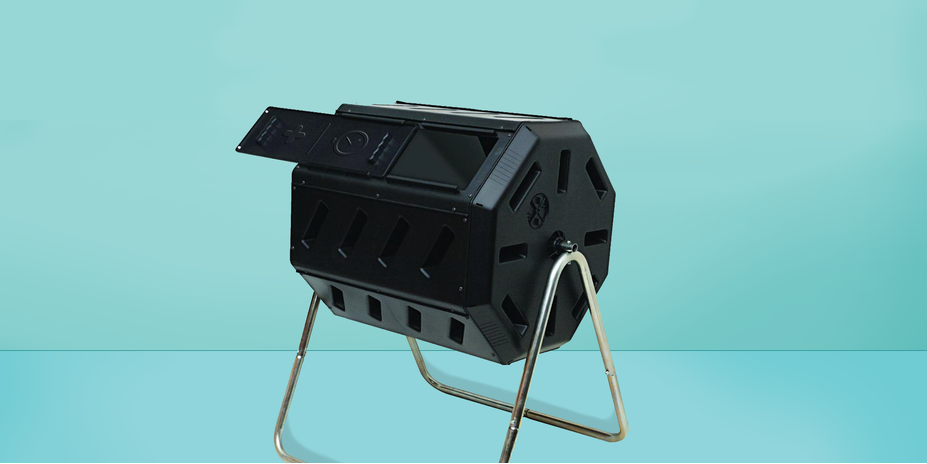Compost bins can live inside or outside; they can be big or small. They can look like a trash can or like something you’d pull Bingo numbers from. They can make use of probiotic additives or be enhanced by worms, and many communities have compost drop-off locations like farmers’ markets; some even have mandatory composting or city pickup. Here’s what to consider when shopping, depending on your needs:
✔️ Worms: Worm composting, or vermicomposting, is extremely efficient. Worms break down organic material for a living in the wild: you’re just bringing the natural instincts of worms into a controlled environment. Worm composting is a great choice for those doing indoor composting, because it controls odor well. (It can also be done outdoors, if the climate is worm-friendly — about 55˚F to 77˚F for the common red wiggler worm.) One difference between traditional and vermicomposting is that worm composting does not require turning, so it’s a fairly hands-off way to compost. Worms love food scrap, so it’s a good solution for those looking to reduce their kitchen waste.
✔️ Indoor vs. outdoor: Think about what you’ll be composting most — and where you want to keep the bin. If you’ll be focusing on garden and yard waste, you’ll want to keep your bin outside. But if you’ll be composting mostly food scraps, you can keep a small bin accessible within the kitchen? A smaller bin prevents odors since you’ll need to empty it regularly. An indoor countertop or under-sink model is likely best for those who want to store food waste prior to taking it to a compost drop-off. But if you want to empty less frequently — or to mix yard and food waste — consider an outdoor bin.
✔️ Material: Compost bins are generally made of plastic, metal or wood. If you’re going to keep your bin outside, it needs to be weather-resistant. Metal is a good choice, as it will withstand the seasons and combat pests, but it can be heavy. Plastic will be lighter and works both indoors and outdoors, but extreme weather could cause it to crack or warp over time. Wood can blend into outdoor spaces nicely, but it can house pests and rot if not properly cared for.
✔️ Tumbling vs. stationary: Compost bins come in two general styles: tumbling and stationary. Turning and stirring your waste helps it break down more quickly, and tumbling bins make this task a cinch: They feature a side crank or ability to spin a drum to help you mix your waste. All tumblers are elevated enough to spin, but many are high enough to provide a bonus benefit of being harder for animals to invade. Stationary bins are stand-alone canisters that require mixing by hand. That said, if you are taking your scraps to a drop-off point or a city collection, you won’t need to take on as much compost maintenance, making stationary models a good choice. Stationary bins are also a smart pick if you want to include worms in your composting.
✔️ Seal: Compost bins with tight-fitting lids will help contain odors, which is essential for indoor bins but is also beneficial with outdoor bins, as it makes it less likely that it will attract animals. A tight seal will also deter any rodents or pest who are curious about the bin even when scent is minimized. But you do want a bin that opens with ease. Tumbling bins in particular need smoothly opening lids so that you aren’t just rotating the bin when you try to lift the lid.
✔️ Filters: Some indoor models rely on a sealed lid to prevent odors. But many include a filter. Look for removable filters that can either be washed or replaced. Bonus if your version includes replacement filters with the purchase of the bin.
✔️ Bags: Many bins are designed to keep compost bags in place, but it’s worth noting that some compostable bags will not break down in a home-composting environment. They require the higher temperatures reached more commonly in large-scale environments or municipal facilities. If you’re composting at home, it’s a good idea to avoid bags. If you want or need to use them, do some research to make sure yours will break down under home-composting conditions.

